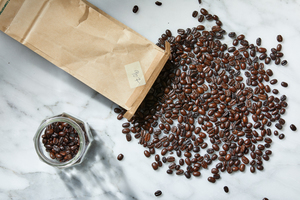You don’t have to be a zero-waste social influencer to tap into what is happening in today’s bulk-bin aisle. It may well be the most dynamic place to buy much of what you need to live well — or at least with a nod to sustainability.
What was once the destination for a small number of environmentally conscious souls now draws customers shopping for economic, cultural, medicinal and even political reasons, says Kenneth Yates, a manager at the Takoma Park-Silver Spring Co-op in Maryland.
Oats, dried beans and trail mix have filled the scoop and gravity bins for decades. But they now share display space with bulk offerings of shampoo and laundry detergents, spices and wellness herbs, teas and coffee beans, oils and vinegars, liquid sweeteners and edible insects, in several flavors.
There’s a difference between “bulk” and “bulky,” so do not be put off by the term. Bulk bins afford the opportunity to acquire items great and small. You will often pay less per pound for the same foodstuffs packaged elsewhere in the store, and you can save money by purchasing just the amounts you need.
The “aisle” extends to shopping in bulk online, which is not the same thing as, say, loading up on dual-bag cereal boxes via Costco.com. Oregon-based Azure Standard ships fresh and shelf-stable foods directly to consumers nationwide, and in some parts of the country its trucks deliver to locations for customer pickup, which saves on shipping costs, especially for heavy goods.
The more you buy in bulk via Azure, the lower the price per pound goes. A five-pound order of rolled oats costs $1.03 per pound, which drops to 67 cents for a 25-pound order. (The company is so committed to zero waste that it uses packing boxes obtained free — ones misprinted by other companies.)
But you’re probably more familiar with the large glass jars and plastic bins in the bulk aisles of natural foods markets. Customers use small scoops and spoons to dish out pennies’ worth of spices and dried herbs that are most likely fresher than what is in their own cabinets.
You might wonder, if bulk bin is such a win-win for sustainability and household food budgets, why haven’t we seen it flourish in all supermarkets? One reason might be the fallout from concerns about food safety. In The Washington Post Food section’s 1983 story on FDA guidelines for bulk-food retail sales, there were tales of shoppers’ hands dipping into bins for sampling and worries that enforcement from the local health department would be hit-or-miss.
Another reason: An aisle of bargain-priced foods in bulk bins would take up shelf space that name-brand products must pay dearly for.
And some markets’ bulk-bin aisles are managed more efficiently than others. A visit to the TP-SS Co-op reveals a near-ideal scenario with more than 200 items. The area is spotless, monitored on the half-hour. Customers fill their pre-weighed containers brought from home. Airtight gravity bins are a midrange height, made of BPA-free materials and, most importantly, are filled with what works best in them, such as dried beans, nuts, wrapped candies, seeds and rice. Wider scoop bins hold granolas, dried fruits, flours and grains, while closed, rolling bins carry the “high-volume” items such as oats and flours.

To ensure freshness when you buy coffee beans in bulk, look for ones stored in an airtight gravity bin and not in an open barrel. The bins should look clean and oil-free. (Photo by Tom McCorkle for The Washington Post; food styling by The Washington Post’s Amanda Soto).
To make the most of your bulk-bin shopping, here are things to look for and tips to keep in mind:
Check out the aisle every now and then. There might be a new variety of honey you’ve never tried, or the same brand of quinoa that you’ve been buying by the box.
Keep sensitivities in mind. A good bulk-bin setup will keep foods that are potential allergens well away from any potential cross-contamination.
Be a thoughtful shopper. Filled a bag, then changed your mind? Don’t leave it on the bulk-bin shelf; instead, take it to the help desk. Do not use the same scoop for different bins. It doesn’t take long, either, to develop a touch for working the gravity bins — those clear, vertical self-serve containers that can whoosh down far more product than you intended to take.
Bring your own containers. This is a commitment, but if you trained yourself to carry reusable shopping bags, you can do this, too. A store system should be in place where your jar can be weighed and labeled before you fill it. That weight will be subtracted from the filled amount at checkout.
Ask about product turnover. Store employees who know the bulk-bin inventory will be able to tell you how quickly items are replenished. A week connotes good turnover and fresh inventory.
Be picky about bulk coffee beans. To ensure freshness, look for ones stored in an airtight gravity bin and not in an open barrel. The bins should look clean and oil-free.
Store smart. When you fill plastic or paper bags at the market, transfer those bulk-bin foods to airtight canisters once you get home. And remember: You have more room than you think, even in small kitchens, once you decant from original packaging into convenient, space-saving containers.

